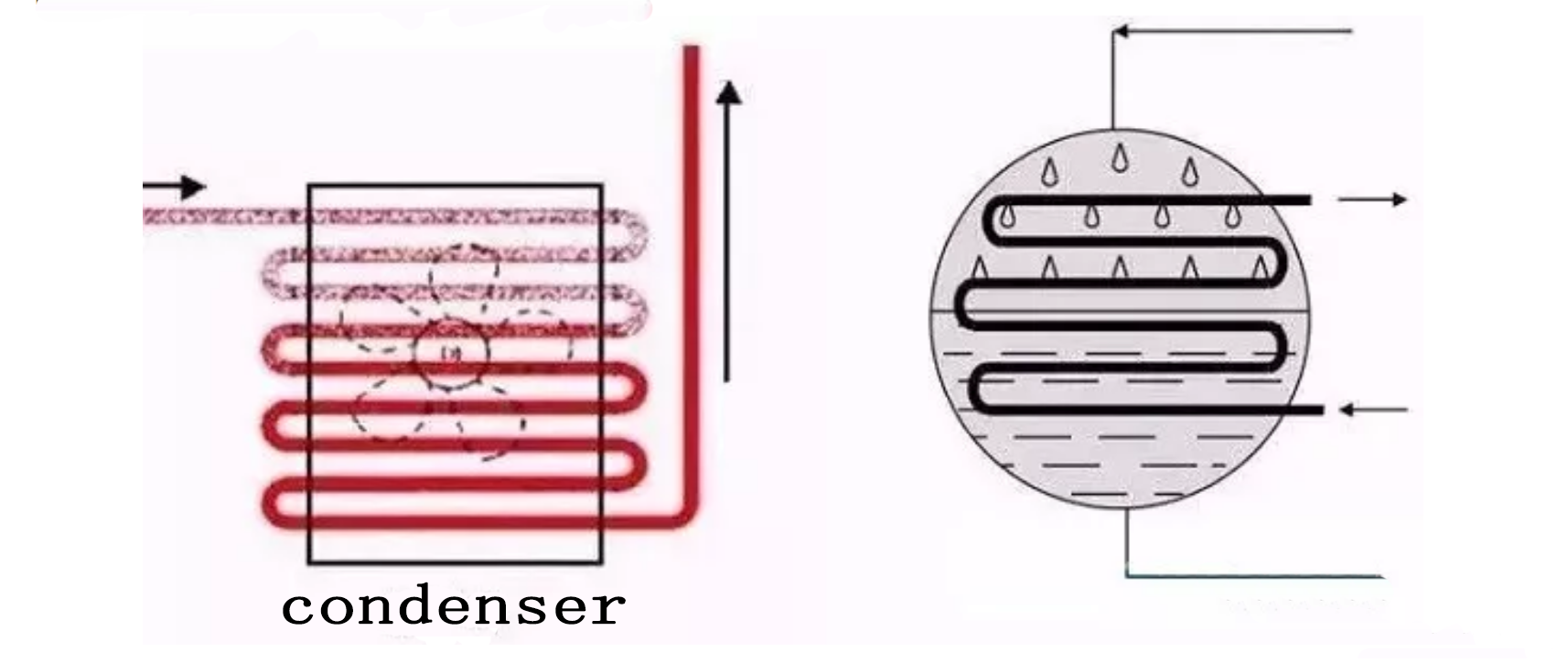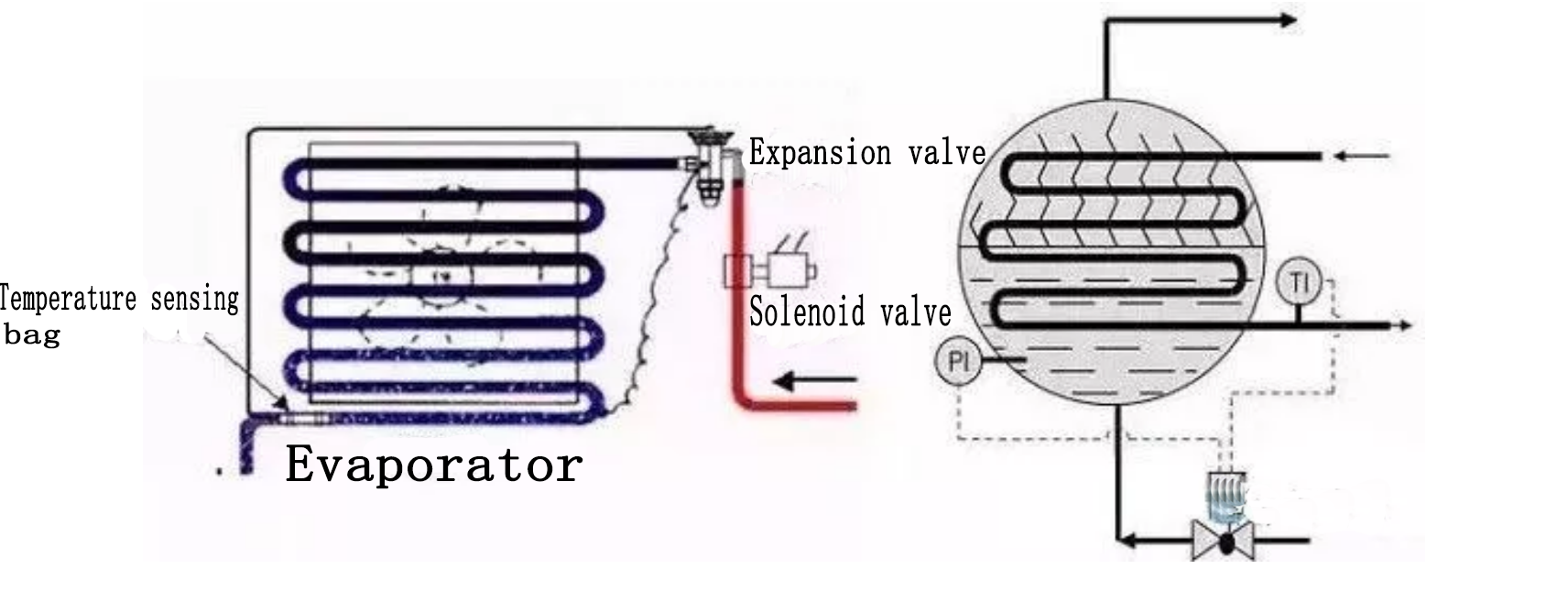What is refrigeration?

What is refrigeration?
Refrigeration: The method of using mechanical equipment to lower the temperature object to the required temperature is called refrigeration.
In the refrigeration process, the transfer of heat from low temperature to high temperature is due to the consumption of external energy, which is achieved by the work of the compressor.
Boiling; water needs to absorb heat to boil, and it boils at 100 degrees; freon starts to boil at -30 degrees and absorbs heat.
The relationship between boiling and pressure.
Basic compression cycle basic process:

The simplest refrigeration system consists of four major elements: ① compressor; ② condenser; ③ throttle valve; ④ evaporator.
The evaporation process of the refrigeration cycle:
Evaporation process: The low-pressure liquid intercepted by the throttle valve absorbs heat from the surrounding medium in the evaporator for refrigeration. During the evaporation process, the temperature and pressure of the refrigerant remain unchanged.

The compression process of the refrigeration cycle:
Compression process: The temperature and pressure of the gas coming out of the evaporator after the completion of the refrigeration function are compressed by the refrigeration compressor, the temperature and pressure rise sharply. The gas discharged from the compressor becomes hot steam with a large degree of superheat. When compressing gas, the compressor consumes a certain amount of compression work, but the refrigerant entropy does not change.
The condensation process of the refrigeration cycle:
Condensation process: The high-temperature and high-pressure superheated steam discharged from the refrigerator enters the condenser to exchange heat with cooling water or air, so that the superheated steam gradually becomes saturated steam and then into saturated liquid. When cooling with cooling water, the temperature of the saturated liquid continues to decrease, resulting in overcooling. The pressure remains constant during the condensation process.
The four processes of the refrigeration cycle
Throttle process: The liquid from the condenser is throttled by the throttle valve and becomes a liquid at room temperature and low pressure. The refrigerant enthalpy value remains unchanged during throttling.
The above four processes are continuously circulated in sequence to achieve the purpose of refrigeration.

Overview of the refrigeration process:
The state of the unit from the evaporator is a gas refrigerant; after adiabatic compression by the compressor, it becomes a high temperature and high pressure state. The compressed gas refrigerant is cooled and condensed at equal pressure in the condenser, and then changes into a liquid refrigerant after condensation, and then expands to a low pressure through a throttle valve and becomes a gas-liquid mixture. Among them, the liquid refrigerant at low temperature and low pressure absorbs the heat of the substance to be cooled in the evaporator and becomes a gaseous refrigerant again. The gaseous refrigerant re-enters the compressor through the pipeline to start a new cycle. These are the four processes of the refrigeration cycle. It is also the main working principle of screw chillers.



